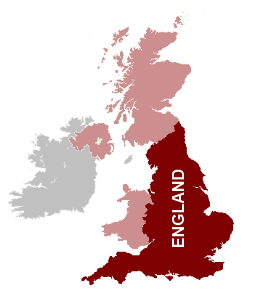It’s a question we often get asked; The UK, Britain, Great Britain, The British Isles, England… what’s the difference? Well, being the helpful folk that we are, we’ve decided to put forward a helpful cribsheet on just that subject!
The United Kingdom (UK)
The UK is short for The United Kingdom of Great Britain and Northern Ireland… quite a mouthful! It is a sovereign state (in the same way as France or the USA) but is made up of four countries; England, Scotland, Wales and Northern Ireland. For Americans, the best analogy would be that the UK is like the USA, whilst its four consistent countries are like states.
There is a long and complicated history that follows the formation of the United Kingdom, but here are the highlights:
c. 925 – The Kingdom of England. Established by the unification of Anglo-Saxon tribes across modern day England.
1536 – Kingdom of England and Wales. A bill enacted by King Henry VIII which effectively made England and Wales the same country, governed by the same laws.
1707 – Kingdom of Great Britain. The Kingdom of England (which includes Wales) joined with the Kingdom of Scotland to form The Kingdom of Great Britain.
1801 – United Kingdom of Great Britain and Ireland. Ireland joins the union, and once again the name changes.
1922 – United Kingdom of Great Britain and Northern Ireland. The Republic of Ireland (Eire, or ‘Southern Ireland’) withdraws from the union, leaving just the northern counties of Ireland. This is the UK that remains to this day.
So when was the UK established? Although some people argue that the UK was formed in 1707 by the Act of Union between England, Wales and Scotland, the name United Kingdom wasn’t adopted until 1801 when Ireland was brought into the union.

The United Kingdom (coloured in red) with the Republic of Ireland in grey.
Great Britain (sometimes just referred to as ‘Britain’)
Great Britain is not a country; it’s a landmass. It is known as ‘Great’ because it is the largest island in the British Isles, and houses the countries of England, Scotland and Wales within its shores.
The name Britain derives from the Roman word Britannia, but there are two conflicting arguments about why the ‘Great’ was stuck on the front of it. The first is that it is used to distinguish Britain from its similar sounding, but much smaller French neighbour, Brittany. The second reason is due to the ego of a certain King James I, who wanted to make it abundantly clear that he wasn’t just the king of the old Roman Britain (which only included England and some of Wales), but of the entire island; thus he referred to himself as King of Great Britain.

Great Britain in red, Ireland in grey.
The British Isles
The British Isles is the name of a group of islands situated off the north western corner of mainland Europe. It is made up of Great Britain, Ireland, The Isle of Man, The Isles of Scilly, The Channel Islands (including Guernsey, Jersey, Sark and Alderney), as well as over 6,000 other smaller islands.

The British Isles in red, with mainland Europe in green.
England
Just like Wales and Scotland, England is commonly referred to as a country but it is not a sovereign state. It is the largest country within the United Kingdom both by landmass and population, has taken a pivitol role in the creation of the UK, and its capital London also happens to be the capital of the UK.
It is perhaps understandable then that England is often (although incorrectly) used as a term to describe the whole of the UK.

So there you have it! If you’re still a bit confused over the differences, here’s a quick summary:
The UK – a sovereign state that includes England, Scotland, Wales and Northern Ireland.
Great Britain – an island situated off the north west coast of Europe.
British Isles – a collection of over 6,000 islands, of which Great Britain is the largest.
England – a country within the UK.
Published: 6th January 2015.











